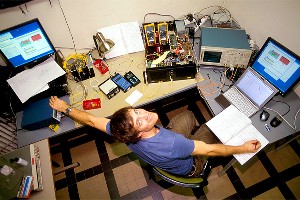Two European universities, one research institute, and a computer security company developed a technique to exploit imperfections in quantum cryptography systems, then created a countermeasure for it.
Quantum cryptography allows the distribution of a cryptographic key across an optical network, then applies the laws of quantum physics to guarantee its secrecy. The technique uses the Heisenberg uncertainty principle – observation causes disturbances – to reveal eavesdropping on an optical fiber. Based on this principle, detectors measure the relevant quantum property of single photons.
Researchers at the Norwegian University of Science and Technology (NTNU) and the University of Erlangen-Nürnberg in Germany together with the Max Planck Institute for the Science of Light also in Germany developed and tested a technique exploiting imperfections in quantum cryptography systems to implement an attack. The technique allows hackers to remotely gain control of the photon detector to catch eavesdropping. One of the researchers noted, “Unlike previously published attempts, this attack is implementable with current off-the-shelf components.”
The researchers published their findings yesterday in the online version of Nature Photonics. Fortunately, the collaboration included Swiss computer security company ID Quantique SA, which with NTNU developed a countermeasure for this technique before publication of the article. ID Quantique itself is a spin-off from the University of Geneva.


 RSS - Posts
RSS - Posts
You must be logged in to post a comment.